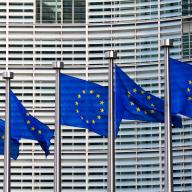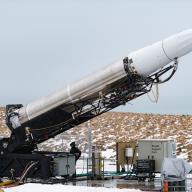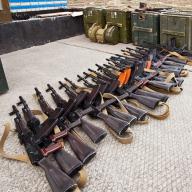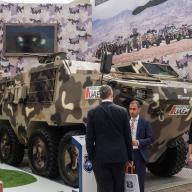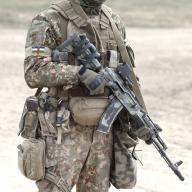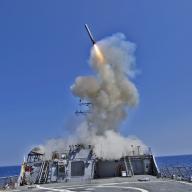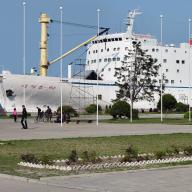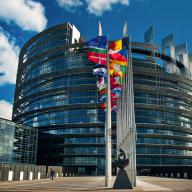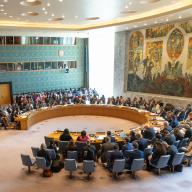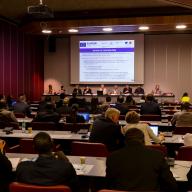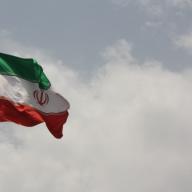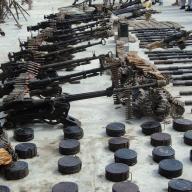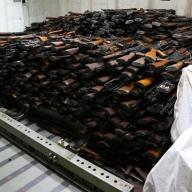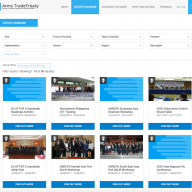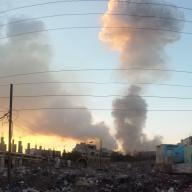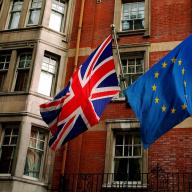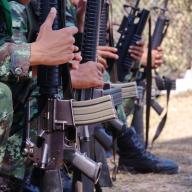This backgrounder assesses the motivations behind the support for a new United Nations General Assembly resolution and two predecessors, the concerns they have raised, and their potential impact on the regimes and global non-proliferation efforts.
Related commentary: Dual–use and arms trade control
The Missile Technology Control Regime at a crossroads
The Missile Technology Control Regime is a cornerstone of states’ efforts to control the development, proliferation and use of missiles and other unmanned delivery systems. However, it faces serious structural, operational, membership and technology-related challenges that call for new initiatives and a strengthening of the regime’s resilience.
Revising the EU Dual-use Regulation: Challenges and opportunities for the trilogue process
The 2009 EU Dual-use Regulation (Council Regulation 428/2009) creates a common legal basis for European Union (EU) member states’ controls on the trade in ‘dual-use items’ (i.e. goods, materials and technologies that may be used for both civilian and military purposes) and is a crucial component of global non-proliferation efforts.
The inclusion of gender-based violence concerns in arms transfers decisions: The case of the Arms Trade Treaty
Article 7(4) of the Arms Trade Treaty requires that states parties—when deciding whether to approve an arms export—shall take into account the risk that the items may be used to commit or facilitate serious acts of gender-based violence (GBV) or violence against women and children.
Advances in 3D printing technology: Increasing biological weapon proliferation risks?
The states parties to the Biological and Toxin Weapons Convention (BWC) are gathering in Geneva from 29 July to 8 August for a series of Meetings of Experts. Among other topics, states are reviewing scientific and technological developments that impact the objectives of the treaty.
Coordinating arms transfer and SALW control assistance: What role for the Arms Trade Treaty?
The 2013 Arms Trade Treaty (ATT) is the first international, legally binding instrument establishing common international standards for regulating the trade on conventional arms. The ATT also includes specific provisions on implementation assistance.
To stay or not to stay: Will Europe’s new trade initiative make a difference for Iran?
‘Today we have taken a significant step forward in delivering our commitment under the Iran nuclear deal to preserve sanctions relief for the people of Iran.’ These were the words of Jeremy Hunt, Foreign Secretary of the UK, as he introduced the so-called Special Purpose Vehicle (SPV), which is the latest attempt by the E3 (France, Germany and the UK) at preserving the 2015 Iran nuclear deal, or the Joint Comprehensive Plan of Action
3D-printable guns and why export controls on technical data matter
New developments in the 3D-printable gun case have revived the debate on the dangers of 3D-printing of firearms and the sharing of their electronic blueprints online. While these developments may only have a limited immediate impact on the proliferation of small arms, this approach has the potential to undermine controls on 3D printing and export controls on technical data more broadly.
SDG16.4 and the collection of data on illicit arms flows: Progress made but challenges ahead
This backgrounder provides an overview of ongoing and potential work on measuring states’ achievement of goal 16.4. It begins by outlining the SDG process and how it has sought to overcome the challenges associated with measuring illicit arms flows. It then summarizes the data collection efforts to date and outlines some possible options for filling the gaps that exist.
The conflict in Yemen and EU’s arms export controls: Highlighting the flaws in the current regime
Under the 1998 EU Code of Conduct on Arms Export, which was replaced in 2008 by the EU Common Position on Arms Exports, member states of the European Union have committed themselves to achieving ‘high common standards’ and ‘convergence’ in their arms export controls.
The 2015 UN Register on Conventional Arms: still time to improve
Following the trend in 2012–14, 2015 is likely to be another disappointing year for transparency in arms transfers.
‘Rules of the Road’ for the Arms Trade Treaty agreed in Cancun but stiffer tests lie ahead
The first Conference of States Parties (CSP1) to the international Arms Trade Treaty (ATT), held in Cancun Mexico, ended yesterday.
Will the arms trade treaty be stuck in the past?
With two days of talks to go, the draft of an arms trade treaty (ATT) being negotiated in the UN looks dangerously likely to be a relic before it ever comes into force.
For the bathroom or the missile factory? Why dual-use trade controls matter
Toothpaste is a harmless consumer product, but it contains fluoride compounds—industrial chemicals that are needed to manufacture the deadly nerve agent sarin—making it a so-called dual-use item.
Looking back to ensure future progress: developing and improving multilateral instruments to control arms transfers and prevent illicit trafficking
Between July and September this year, the international community will be faced with the daunting prospect of concluding negotiations on an international arms trade treaty and a review of the implementation of the United Nations programme of action on small arms and light weapons.
The Arms Trade Treaty negotiations: seize the opportunity
When the penultimate meeting of the Preparatory Committee (PrepComm) for an Arms Trade Treaty (ATT) convenes in New York in July, the delegates will have a packed agenda.
Will pinning NATO’s security to missile defence lead to more cohesion?
A steady and incremental growth of ballistic missile capabilities is taking place fairly close to the perimeter of NATO as several countries improve the range and accuracy of their missiles. Technical barriers, such as export controls harmonized under the Missile Technology Control Regime, have not prevented these programmes from blossoming, and there is no meaningful international arms control effort to curb or reduce missile proliferation.



